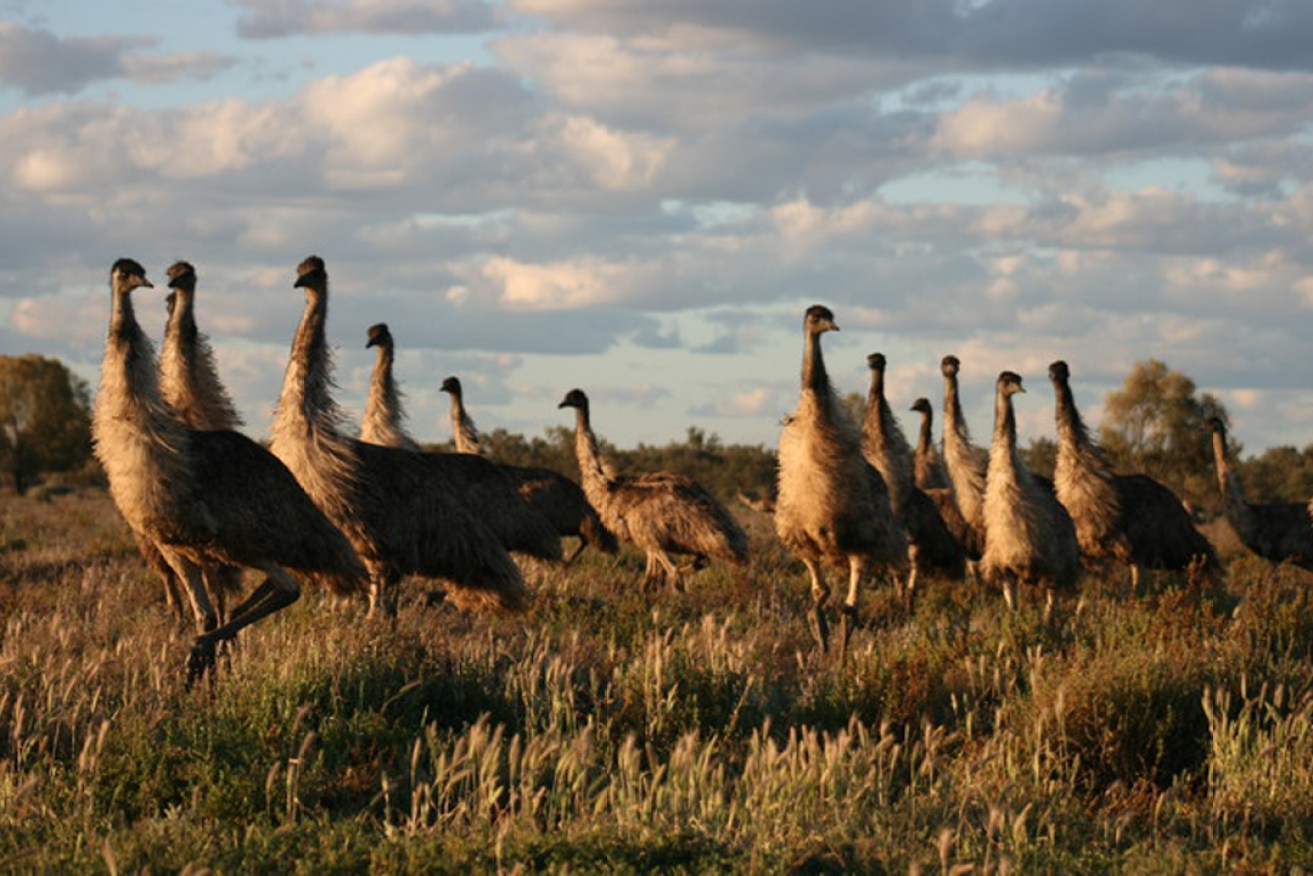The Australian palaeodiet: which native animals should we eat?
If Australians are to eat healthy, unprocessed meats while making sustainable choices, native animals would be an obvious choice, writes Jillian Garvey. But which animals should we be considering?

Should we add emus to our diet? Photo: Jillian Garvey
The diets of indigenous Australians prior to 1770 is a useful starting point for this discussion. The zooarchaeological record offers a glimpse into which fauna people hunted and how they were butchered and cooked.
Unfortunately, old animal bones are uncommon in Australia due to its open and dry landscape. The remains of some past meals dating back to almost 50,000 years ago have been found in archaeological assemblages, mostly in karst systems such as those in the Flinders Rangers, south-west Tasmania and south-west Western Australia.
To compensate for the lack of archaeological material, I am studying the economic utility of several Australian animals. In other words, how much meat, fat and marrow different body parts provide. This, coupled with an analysis of the nutritional quality of the meat, will help us understand why they were selected or ignored.
My “Native Bush Tucker” project focuses primarily on marsupial animals. When completed, it will be an online database to aid the study of what people ate in the past with the goal of including these meats on our modern menu.
What did people eat prior to 1770?
The archaeological record suggests Aboriginal Australians had varied diets prior to colonisation, with specific prey and butchery patterns in different parts of the country.
For example, in Ice Age south-west Tasmania (between approximately 40,000 and 12,000 years ago) people hunted the medium-sized Bennett’s wallaby, focusing on its larger and “meatier” hindlimbs.
Since wallabies, like kangaroos and other macropods, are very lean, it was thought people regularly split open the long bones to access the nutritious marrow. This is one way they could avoid potentially fatal “protein poisoning” – a rare type of malnutrition caused by an absence of fat in the diet.
According to the archaeological record, wombats were the second most common prey animal in Ice Age Tasmania, with people focusing on their skull, shoulder girdle and forelimbs. The “meaty” wombat pelvic region and bone marrow were largely ignored.
Conversely, animals such as emu, possums, platypus and echidna are rare in Ice Age Tasmanian archaeology.
Just how good are kangaroos and wombats to eat?
To undertake my study, animals were collected as fresh road-kill (with the relevant permits). Carcasses were carefully butchered, each body part fully dissected and the different components weighed and nutritionally analysed.
I found kangaroos and wallabies to be very lean with little detectable fat. On average, macropod carcasses provide between 25 per cent to 50 per cent of their body weight in meat.
My analysis of macropod (kangaroo and wallaby) bone marrow indicates it’s highly nutritious, especially in polyunsaturated fats such as oleic acid. This helps to explain patterns in the archaeological record, as macropod long bones, in particular the lower leg (shin or tibia) bone, are commonly found split open.
I found wombats to be fatty animals, with a large amount of fat located along their backs and across their shoulders. This could explain why the heads and shoulders of wombats are common in Tasmanian Ice Age assemblages, as fat could be easily obtained without having to access the marrow cavity.
However, while I found that a wombat consists of 25 per cent to 40 per cent of meat and fat, these were not as healthy as kangaroos and wallabies as they contained a higher amount of saturated fat.
What about emus and shellfish?
There has been some debate as to why emu bones are rare in Australian archaeological assemblages, while their eggshells are more common.
Modern emu butchery and nutritional analyses indicate there is lots of nutritious fat associated with the meat, with up to 50 per cent of the total weight of the animal consisting of edible muscle, mostly located around the birds’ pelvis. Hence people were able to access a large amount of meat and fat from the carcass without moving or damaging the bones.
The large number of freshwater shellfish middens scattered along Australia’s inland lakes, rivers and creeks indicates that freshwater molluscs were an important food resource for indigenous Australians. Recent analysis of middens along the Murray River in north-west Victoria indicates that both the river mussel and the smaller river snail were prey.
While these molluscs are very low in fat, they contain high amounts of several important trace elements such as magnesium, iron, sodium and zinc. Such elements and minerals are essential for ensuring healthy cellular function.
What about the modern Australian diet?
If Australians are to start reducing our dependence on introduced animals, then we need to ensure that our choices are ethical, humane and environmental.
Incorporating more macropods into our diets is the obvious choice, as these animals are lean and what fats they do contain are healthy. Emus and wombats are other possibilities, as they contain readily accessible meat and associated fat.
Freshwater shellfish are another alternative, although salinity and the introduction of locks and weirs along our major rivers has altered the distribution of many of these molluscs.
I plan to extend the number of animals being researched to include things such as echidna, possums, small birds, reptiles, and other shellfish and fish. This will broaden our understanding of the possible native fauna we could be eating.
Ultimately, there are many obstacles to overcome in adding these foods to our diet, not least convincing the broader population they’re acceptable to serve and can taste good. There’s also the difficulty of sustainably rearing and slaughtering native animals in sufficient quantities.
Perhaps we can take a lesson from Australia’s “first farmers” and how they managed the landscape and used native fauna.
Jillian Garvey is an ARC DECRA Fellow in the Department of Archaeology and History at La Trobe University. This article was originally published on The Conversation.




